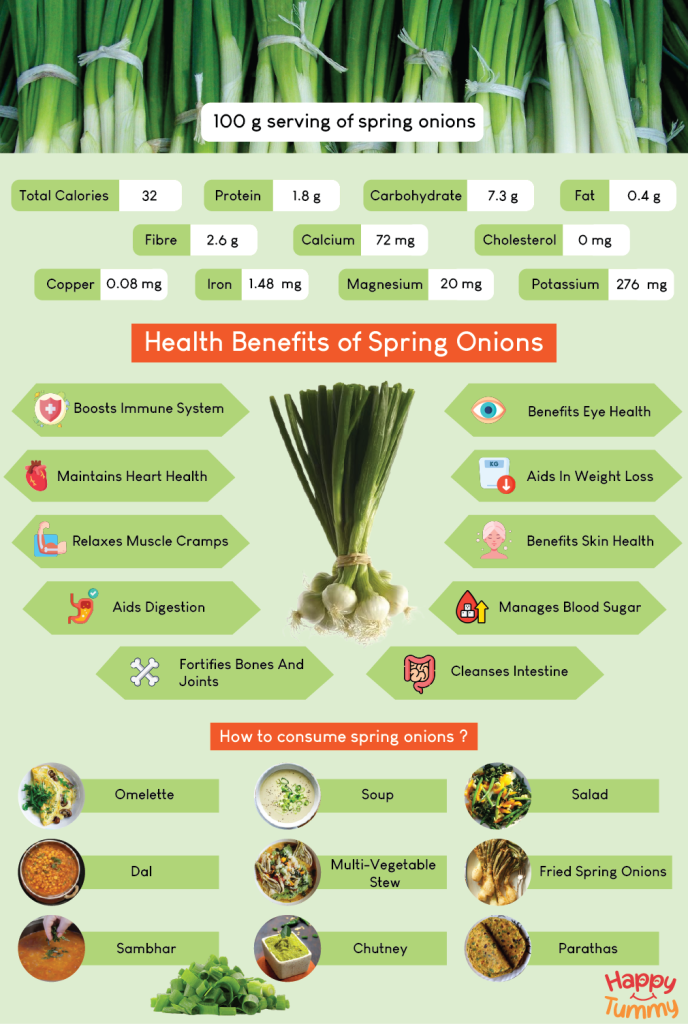Beyond Black Beans: Unearthing the Top 5 Legumes You Should Be Eating for Max Nutrition
The unassuming black bean, a staple in countless kitchens worldwide, often serves as our primary ambassador to the vast and varied kingdom of legumes. Its robust flavor, satisfying texture, and undeniable nutritional prowess—rich in fiber, plant-based protein, and an array of minerals—have rightly earned it a place of honor. Yet, to confine our legume exploration to the black bean alone is akin to admiring a single star and believing we’ve comprehended the entire galaxy. For the discerning palate and the health-conscious mind, there lies a universe of underappreciated, nutritionally dense legumes waiting to be discovered, each offering a unique tapestry of benefits that go far beyond the familiar.
This is a journey into that uncharted territory, a narrative of discovery designed for the knowledgeable individual seeking to optimize their nutritional intake. We will delve into the science and the story behind five exceptional legumes, moving beyond the everyday to unlock a spectrum of health advantages that can profoundly impact everything from gut health and cardiovascular wellness to cellular longevity and cognitive function. Our quest isn’t merely about adding more beans to your plate; it’s about strategically diversifying your dietary portfolio with some of nature’s most potent, sustainable, and often overlooked nutritional powerhouses.
Before we embark, let’s briefly define our terms. Legumes, members of the Fabaceae family, are plants that bear their fruit in pods, containing seeds that are consumed as food. This includes beans, lentils, peas, and peanuts. Their remarkable ability to fix atmospheric nitrogen into the soil, courtesy of symbiotic bacteria in their root nodules, makes them ecological champions, enriching agricultural lands and reducing the need for synthetic fertilizers. This dual role—nourishing both the body and the planet—underscores their unparalleled value.
Our selection criteria for these top five legumes are rigorous: exceptional nutrient density, a distinct and often superior phytochemical profile, significant versatility in culinary applications, and a history of traditional use that speaks to their enduring value. We are seeking those legumes that offer something truly unique, challenging the notion that "a bean is a bean." Prepare to expand your culinary horizons and deepen your understanding of these incredible edible treasures.
>
1. The Mighty Lentil: A Tapestry of Tiny Treasures
While perhaps not as "beyond black beans" as some others, the humble lentil often gets generalized, obscuring the remarkable diversity and specific benefits found within its various types. From the earthy French Puy to the delicate red, the robust green, and the elegant black Beluga, lentils are far more than just a soup ingredient; they are miniature nutritional powerhouses with distinct profiles.
Nutritional Powerhouse Profile:
Lentils stand out for their exceptional protein content, often boasting up to 18 grams per cooked cup, making them a cornerstone for plant-based diets. This protein is remarkably rich in lysine, an essential amino acid often limiting in other grains, creating an ideal complementary pairing. Their fiber content is equally impressive, with a single cup providing upwards of 15-16 grams, a potent mix of both soluble and insoluble fibers. The soluble fiber forms a gel-like substance in the digestive tract, aiding in cholesterol reduction and blood sugar stabilization by slowing glucose absorption. Insoluble fiber promotes digestive regularity and adds bulk to stool, preventing constipation.
Beyond macronutrients, lentils are a micronutrient goldmine. They are particularly abundant in folate (Vitamin B9), crucial for DNA synthesis and repair, red blood cell formation, and preventing neural tube defects during pregnancy. A single serving can provide over 90% of the daily recommended intake. They are also an excellent source of iron, vital for oxygen transport in the blood, though its non-heme form benefits from co-ingestion with Vitamin C to enhance absorption. Magnesium, a cofactor in over 300 enzymatic reactions, and potassium, essential for blood pressure regulation, are also present in significant quantities. Furthermore, lentils provide zinc, copper, manganese, and phosphorus.
Phytochemicals & Health Benefits:
What truly elevates lentils, especially the darker varieties like green and Beluga, is their rich array of polyphenols and other bioactive compounds. These include proanthocyanidins, flavonoids, and phenolic acids, which act as potent antioxidants and anti-inflammatory agents. Research suggests these compounds contribute to:
- Cardiovascular Health: Soluble fiber helps lower LDL ("bad") cholesterol, while potassium and magnesium support healthy blood pressure. The antioxidants combat oxidative stress, protecting arterial walls.
- Blood Sugar Regulation: Their low glycemic index and high fiber content make lentils excellent for managing blood glucose levels, a critical aspect for individuals with diabetes or insulin resistance. The resistant starch found in lentils also ferments in the colon, producing short-chain fatty acids (SCFAs) like butyrate, which nourish gut cells and improve insulin sensitivity.
- Cancer Prevention: The diverse array of polyphenols and fiber may offer protective effects against certain cancers, including colorectal cancer, by modulating cellular pathways and promoting a healthy gut microbiome.
- Gut Microbiome Support: The high fiber content acts as a prebiotic, feeding beneficial gut bacteria and fostering a diverse, resilient microbial ecosystem. This, in turn, influences immune function, mood, and nutrient absorption.
Culinary Versatility & Preparation:
Lentils are perhaps the most versatile and quick-cooking of all legumes. Red lentils cook in as little as 15-20 minutes, disintegrating to thicken soups and dahls. Green and Puy lentils hold their shape beautifully, making them ideal for salads, side dishes, and as a base for vegetarian burgers or meat substitutes. Black Beluga lentils, with their caviar-like appearance and rich flavor, elevate gourmet dishes. Soaking, while not strictly necessary for cooking, can improve digestibility and reduce cooking time. Sprouting lentils further enhances their nutrient profile and reduces anti-nutrients.
>
2. The Humble Chickpea: Golden Globes of Gut Health
The chickpea, or garbanzo bean, is a global culinary darling, famed for its role in hummus and falafel. Yet, its popularity sometimes overshadows the profound nutritional science behind its widespread appeal. These golden, creamy legumes are far more than just a delicious dip; they are fundamental to digestive wellness and overall metabolic health.
Nutritional Powerhouse Profile:
Chickpeas are an outstanding source of both plant protein (around 15 grams per cooked cup) and dietary fiber (approximately 12-13 grams per cup). Like lentils, their fiber composition is balanced, offering both soluble and insoluble components that synergistically support digestive and metabolic health. They provide a significant amount of resistant starch, a type of carbohydrate that bypasses digestion in the small intestine and ferments in the large intestine, fueling beneficial gut bacteria.
In terms of micronutrients, chickpeas are rich in folate, manganese, and copper. Manganese is critical for bone development and enzyme activation, while copper plays a role in iron metabolism and antioxidant defense. They also supply iron, zinc, magnesium, potassium, and B vitamins like thiamine (B1) and pyridoxine (B6). The presence of molybdenum, a trace mineral essential for breaking down sulfites, is also notable.
Phytochemicals & Health Benefits:
Chickpeas are packed with an impressive spectrum of phytochemicals, including saponins, flavonoids, carotenoids, and phenolic acids. These compounds contribute to the chickpea’s potent health-promoting properties:
- Digestive Harmony: The combination of soluble fiber and resistant starch makes chickpeas exceptional for gut health. They act as prebiotics, fostering a thriving colony of beneficial bacteria in the colon. This fermentation process produces SCFAs, which strengthen the gut barrier, reduce inflammation, and may even protect against colon cancer.
- Blood Sugar Management: Their low glycemic index, coupled with high fiber and protein, ensures a slow, steady release of glucose into the bloodstream, preventing sharp spikes and crashes. This makes them highly beneficial for managing type 2 diabetes and promoting stable energy levels.
- Heart Health: Soluble fiber helps lower LDL cholesterol, while potassium helps manage blood pressure. Antioxidants found in chickpeas protect against oxidative damage to blood vessels, contributing to overall cardiovascular resilience.
- Weight Management: The high fiber and protein content contribute significantly to satiety, helping to reduce overall calorie intake and promote healthy weight management.
- Bone Health: Magnesium, manganese, and phosphorus, all present in chickpeas, are vital for maintaining bone density and strength.
Culinary Versatility & Preparation:
Chickpeas are incredibly versatile. They can be roasted for a crunchy snack, pureed into hummus, added to stews, curries, and salads, or even mashed to form a base for vegetarian burgers or "tuna" salad. Their mild, nutty flavor makes them amenable to a wide range of spices and cuisines. Soaking dried chickpeas for 8-12 hours before cooking (and discarding the soaking water) helps reduce oligosaccharides that can cause gas, and also significantly decreases cooking time. Pressure cooking is another excellent method for both speed and reducing anti-nutrient levels.
>
3. Edamame (Whole Green Soybeans): The Complete Protein Powerhouse
Often relegated to an appetizer status in sushi restaurants, edamame—immature soybeans, typically served in their pods—deserves a more prominent place in our nutritional discourse. Unlike highly processed soy products, edamame represents soy in its most whole, minimally altered form, delivering a unique and powerful nutrient profile that sets it apart from other legumes.
Nutritional Powerhouse Profile:
Edamame is exceptional for being one of the few plant-based foods that offers a complete protein profile, meaning it contains all nine essential amino acids in sufficient quantities. A single cup provides an impressive 18 grams of high-quality protein, comparable to animal sources. Its fiber content is also robust, with about 8 grams per cup, contributing to satiety and digestive health.
What truly distinguishes edamame is its unique fatty acid profile, including beneficial omega-3 alpha-linolenic acid (ALA), a rarity in legumes. It’s also an excellent source of essential minerals like iron, magnesium, phosphorus, potassium, copper, and manganese. For vitamins, edamame is rich in folate, Vitamin K (important for blood clotting and bone health), and several B vitamins.
Phytochemicals & Health Benefits:
The most celebrated bioactive compounds in edamame are isoflavones, particularly genistein and daidzein. These phytoestrogens have a weak estrogenic effect in the body, which can be beneficial in various ways. Other notable compounds include saponins, phenolic acids, and lignans. The health implications are vast:
- Hormonal Balance & Bone Health: Isoflavones have been studied extensively for their potential role in mitigating menopausal symptoms (like hot flashes) and preventing bone loss (osteoporosis) in postmenopausal women. They appear to act as selective estrogen receptor modulators (SERMs), binding to estrogen receptors and exerting either weak estrogenic or anti-estrogenic effects depending on tissue type and circulating hormone levels.
- Cardiovascular Protection: Research suggests that soy protein, along with its isoflavones and fiber, can help lower LDL cholesterol and triglycerides, improve arterial elasticity, and reduce blood pressure, contributing to a lower risk of heart disease.
- Cancer Prevention: The isoflavones in edamame have demonstrated anti-cancer properties in various studies, particularly in relation to breast and prostate cancers. They may inhibit tumor growth, induce apoptosis (programmed cell death) in cancer cells, and reduce angiogenesis (the formation of new blood vessels that feed tumors).
- Brain Health: Some studies indicate that soy isoflavones may have neuroprotective effects, potentially improving cognitive function and reducing the risk of neurodegenerative diseases.
- Blood Sugar Control: The combination of protein, fiber, and complex carbohydrates in edamame contributes to a low glycemic index, aiding in stable blood sugar levels.
Culinary Versatility & Preparation:
Edamame is typically boiled or steamed in its pod and served with a sprinkle of sea salt. The beans can also be shelled and added to salads, stir-fries, rice dishes, or blended into dips and spreads. Its mild, slightly sweet, and grassy flavor pairs well with Asian-inspired cuisine but is versatile enough for many applications. As edamame is minimally processed, its nutrient profile is highly bioavailable.
>
4. Kidney Beans: The Antioxidant Champions
Beyond their vibrant crimson hue, kidney beans are nutritional powerhouses, often overlooked in favor of their more common brethren. These robust beans, named for their distinctive shape, are particularly celebrated for their potent antioxidant capacity and significant contributions to gut and metabolic health.
Nutritional Powerhouse Profile:
Kidney beans are an excellent source of plant-based protein, providing around 15 grams per cooked cup, along with an impressive 11-12 grams of dietary fiber. This fiber is predominantly resistant starch and soluble fiber, offering a slow-digesting carbohydrate profile that is beneficial for blood sugar control.
Their micronutrient content is equally compelling. Kidney beans are rich in folate, molybdenum, copper, and manganese. They also supply significant amounts of iron, magnesium, potassium, zinc, and B vitamins, including thiamine (B1) and niacin (B3). The interplay of these minerals supports a myriad of bodily functions, from energy metabolism to nerve function.
Phytochemicals & Health Benefits:
What truly sets kidney beans apart is their exceptionally high concentration of anthocyanins, the same powerful antioxidants found in blueberries and red grapes, which are responsible for their deep red color. They also contain other flavonoids, phenolic acids, and saponins. These compounds contribute to:
- Antioxidant Powerhouse: The high levels of anthocyanins provide robust protection against oxidative stress, neutralizing free radicals that can damage cells and contribute to chronic diseases. This antioxidant capacity is among the highest of all common legumes.
- Cardiovascular Protection: The combination of fiber, potassium, and antioxidants makes kidney beans excellent for heart health. Fiber helps lower cholesterol, potassium helps regulate blood pressure, and antioxidants protect against arterial damage and inflammation.
- Blood Sugar Regulation: With a low glycemic index and high resistant starch content, kidney beans are highly effective at moderating blood glucose levels. The resistant starch ferments in the colon, producing beneficial SCFAs that can improve insulin sensitivity and support gut health.
- Gut Health & Cancer Prevention: The complex carbohydrates and resistant starch act as prebiotics, fostering a healthy gut microbiome. A balanced microbiome is linked to reduced inflammation and a lower risk of colorectal cancer. The fiber also aids in digestive regularity.
- Weight Management: The high fiber and protein content contribute to prolonged satiety, making kidney beans an excellent food for managing appetite and supporting healthy weight.
Culinary Versatility & Preparation:
Kidney beans are a staple in chili, stews, and salads. Their firm texture and earthy flavor hold up well in hearty dishes. It is absolutely crucial to properly prepare dried kidney beans to eliminate phytohaemagglutinin, a lectin that can cause digestive distress. This involves soaking them for at least 8-12 hours, discarding the soaking water, and then boiling them vigorously for at least 10 minutes before simmering until tender. Pressure cooking is another safe and efficient method. Canned kidney beans are pre-cooked and safe to use after rinsing.
>
5. Adzuki Beans: The Sweet Secret of the East
Often overshadowed by their more common Western counterparts, adzuki beans (or azuki beans) are the sweet, reddish-brown jewels of East Asian cuisine. While frequently used in desserts, their nutritional profile reveals them to be far more than just a sugary treat; they are a profound source of minerals, fiber, and unique phytochemicals.
Nutritional Powerhouse Profile:
Adzuki beans are an excellent source of plant protein, offering about 17 grams per cooked cup, alongside a remarkable 17-18 grams of dietary fiber—one of the highest fiber contents among common legumes. This fiber contributes significantly to digestive health and blood sugar regulation.
They are exceptionally rich in minerals, particularly molybdenum, manganese, phosphorus, potassium, copper, and zinc. They also provide a good amount of iron and magnesium. In terms of vitamins, adzuki beans are a powerhouse of B vitamins, especially folate, thiamine (B1), riboflavin (B2), and niacin (B3), all crucial for energy metabolism and neurological function.
Phytochemicals & Health Benefits:
Adzuki beans boast a diverse array of polyphenols, including anthocyanins (responsible for their reddish hue), proanthocyanidins, and various phenolic acids. They also contain saponins. These compounds bestow a range of therapeutic properties:
- Blood Sugar Stability: Their extremely high fiber content, particularly soluble fiber and resistant starch, contributes to a very low glycemic index. This makes adzuki beans exceptionally effective at stabilizing blood glucose levels, making them beneficial for individuals with diabetes or those seeking to prevent metabolic syndrome.
- Kidney & Urinary Health: In traditional Chinese medicine, adzuki beans are revered for their diuretic properties and are often used to support kidney function, reduce edema, and promote urinary health. While scientific research is ongoing, their potassium content supports fluid balance.
- Antioxidant & Anti-inflammatory Effects: The rich concentration of polyphenols provides powerful antioxidant protection against cellular damage and reduces systemic inflammation, contributing to overall disease prevention.
- Digestive Prowess: The substantial fiber content promotes regularity, prevents constipation, and acts as a prebiotic, nourishing the beneficial bacteria in the gut microbiome. A healthy gut microbiome is increasingly linked to improved immune function, mental health, and nutrient absorption.
- Heart Health: Soluble fiber helps lower LDL cholesterol, while potassium helps manage blood pressure. The antioxidants protect against oxidative stress in the cardiovascular system.
Culinary Versatility & Preparation:
Adzuki beans have a naturally sweet, nutty flavor that makes them unique among legumes. They are most famously used in East Asian desserts, particularly "anko" (sweet red bean paste) for mochi, pastries, and ice cream. However, their versatility extends to savory dishes. They can be added to soups, stews, rice bowls, or salads, offering a distinct flavor profile. Soaking adzuki beans for several hours reduces cooking time and can improve digestibility. They cook relatively quickly compared to larger beans, usually within 45-60 minutes on the stovetop.
>
Beyond the Bean: The Broader Impact of Legumes
Our journey through these five exceptional legumes—Lentils, Chickpeas, Edamame, Kidney Beans, and Adzuki Beans—reveals a common thread: they are not merely foods, but pillars of health, sustainability, and global nutrition.
Environmental Stewardship:
Beyond their direct nutritional contributions, legumes are agricultural superheroes. Their symbiotic relationship with nitrogen-fixing bacteria in their roots enriches the soil, reducing the need for synthetic nitrogen fertilizers, which are energy-intensive to produce and contribute to greenhouse gas emissions and water pollution. They improve soil structure, increase biodiversity, and are remarkably water-efficient compared to many animal protein sources. Integrating legumes into crop rotation systems enhances soil fertility and reduces pest and disease pressure, embodying principles of regenerative agriculture. Choosing legumes is a direct vote for a healthier planet.
Economic Accessibility:
Globally, legumes represent one of the most affordable and accessible sources of high-quality protein, fiber, and micronutrients. In a world grappling with food insecurity and nutritional deficiencies, legumes offer a democratic solution, providing substantial nourishment at a fraction of the cost of animal proteins. This economic accessibility makes them a vital component of sustainable food systems worldwide.
Addressing Anti-nutrients: A Knowledgeable Approach:
For the knowledgeable audience, the discussion around legumes often includes the topic of "anti-nutrients" like phytic acid (phytate) and lectins. It’s crucial to understand that these compounds, which are plant defense mechanisms, are largely mitigated by proper preparation and that the nutritional benefits of legumes overwhelmingly outweigh these concerns.
- Phytic Acid: Binds to minerals like iron, zinc, and calcium, potentially reducing their absorption. However, soaking, sprouting, fermentation, and cooking significantly reduce phytic acid content by activating the enzyme phytase (naturally present in legumes) or through heat degradation. Furthermore, co-consuming legumes with Vitamin C-rich foods dramatically enhances non-heme iron absorption, negating much of phytic acid’s effect.
- Lectins: Proteins that can bind to carbohydrates and, in high amounts (e.g., raw kidney beans), can cause digestive distress. Proper cooking, especially boiling for at least 10 minutes (as emphasized for kidney beans), denatures lectins, rendering them harmless. Soaking and sprouting also reduce lectin activity. For most properly prepared legumes, lectin levels are negligible and harmless.
- Saponins: Found in some legumes (like chickpeas and soybeans), these compounds can have both beneficial (cholesterol-lowering, anti-cancer) and potentially anti-nutritional effects (interfering with nutrient absorption). However, their levels are generally low in cooked legumes and their overall impact is considered positive.
The take-home message is clear: don’t let exaggerated concerns about anti-nutrients deter you. Humanity has safely consumed legumes for millennia, and traditional preparation methods are effective at unlocking their full nutritional potential.
>
Conclusion: Embracing the Legume Renaissance
Our journey has revealed that the world of legumes extends far beyond the familiar black bean, offering a vibrant spectrum of flavors, textures, and unparalleled nutritional benefits. From the versatile, iron-rich lentils to the gut-healing chickpeas, the complete protein powerhouse edamame, the antioxidant-rich kidney beans, and the sweet, mineral-dense adzuki beans, each offers a unique contribution to a holistic diet.
These legumes are not merely ingredients; they are architects of health. They nourish our gut microbiome, stabilize our blood sugar, protect our cardiovascular system, bolster our immunity, and even contribute to the fight against chronic diseases. Simultaneously, they champion environmental sustainability, enriching our planet with their nitrogen-fixing capabilities and providing an economically viable source of nutrition for billions.
For the knowledgeable consumer, the invitation is clear: diversify. Step beyond the black bean and explore the rich, diverse tapestry that the legume family offers. Experiment with these five nutritional titans, integrate them into your culinary repertoire, and witness firsthand the profound impact they can have on your health, your plate, and the planet. In embracing this legume renaissance, we are not just eating well; we are living wisely, sustainably, and deliciously.







